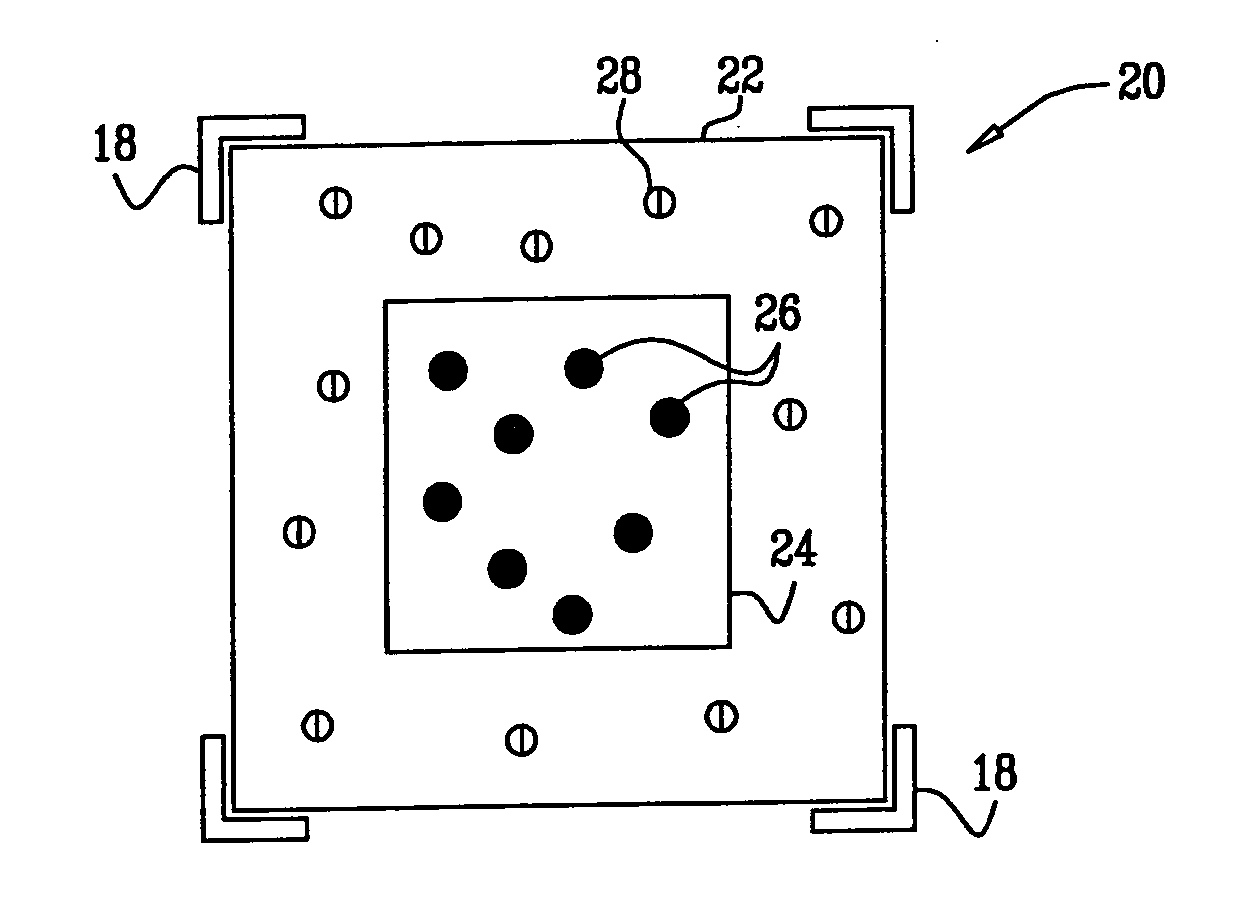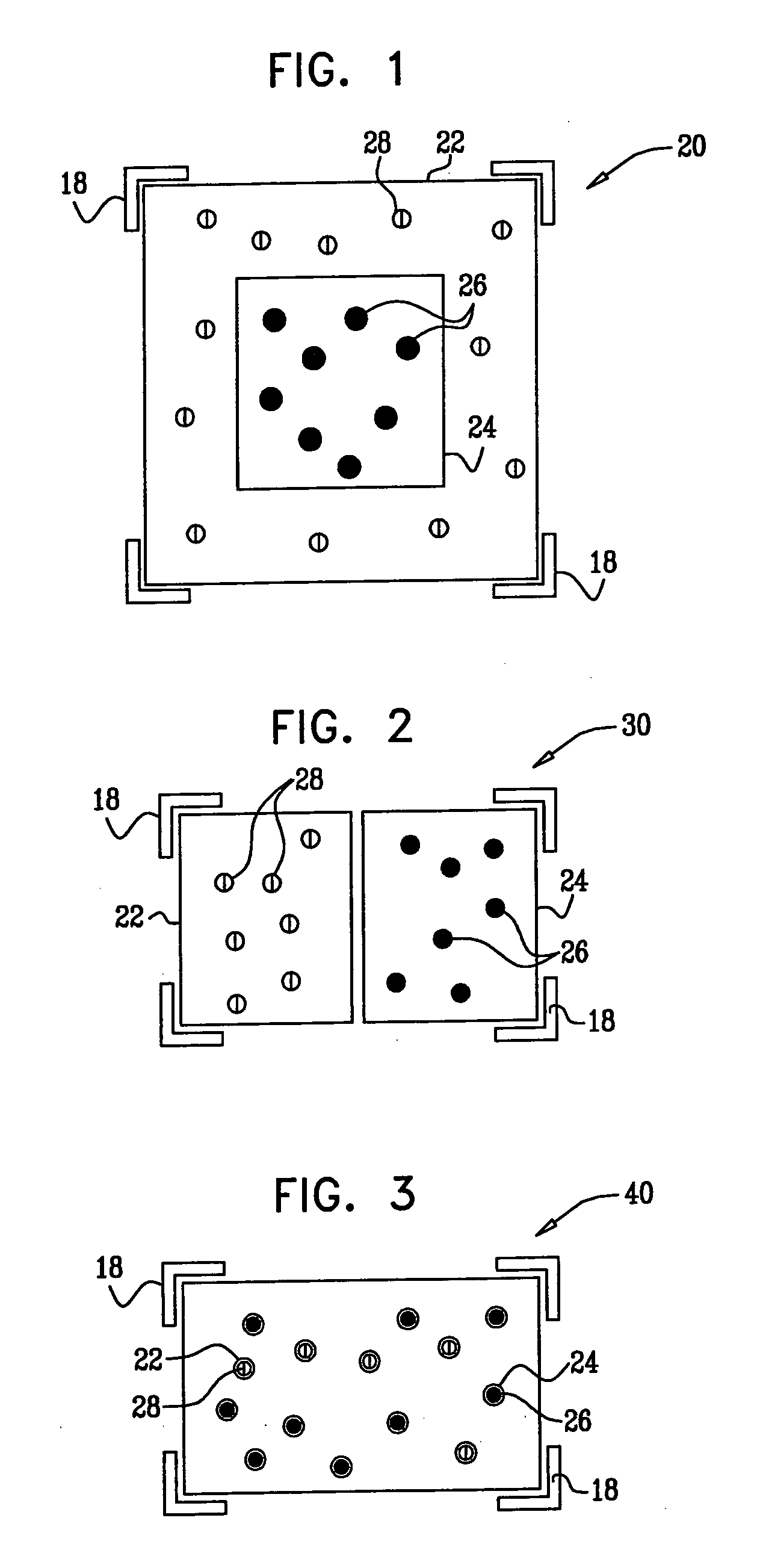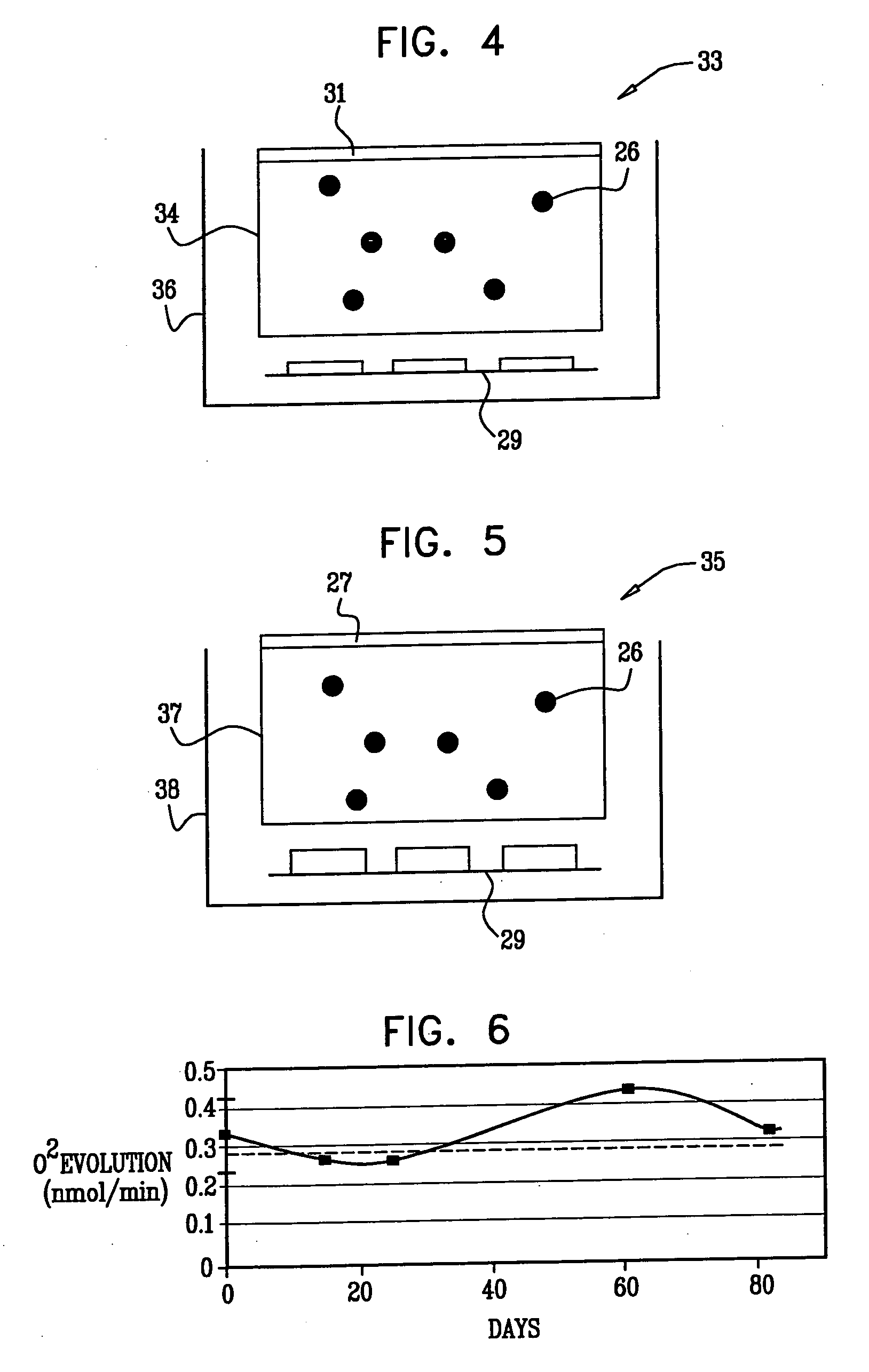Protecting algae from body fluids
- Summary
- Abstract
- Description
- Claims
- Application Information
AI Technical Summary
Benefits of technology
Problems solved by technology
Method used
Image
Examples
Embodiment Construction
[0078]Reference is now made to FIG. 1, which is a schematic illustration of apparatus 20 comprising a housing 18 comprising a first semi-permeable barrier 22 and a second semi-permeable barrier 24 configured for implantation into a body of a subject, in accordance with an embodiment of the present invention. Typically, but not necessarily, apparatus 20 is designated for subcutaneous implantation. Functional cells 28 are disposed within a first region of apparatus 20, the first region being surrounded by first semi-permeable barrier 22. Photosynthetic elements 26 are disposed within a second region of apparatus 20, the second region being surrounded by second semi-permeable barrier 24. The functional cells and photosynthetic elements are typically disposed within a matrix, which itself comprises, for example, a semi-permeable polymeric substance such as: agar, agarose, alginate, polyethylene glycol and chitosan. Typically, first semi-permeable barrier 22 immunoisolates functional cel...
PUM
 Login to view more
Login to view more Abstract
Description
Claims
Application Information
 Login to view more
Login to view more - R&D Engineer
- R&D Manager
- IP Professional
- Industry Leading Data Capabilities
- Powerful AI technology
- Patent DNA Extraction
Browse by: Latest US Patents, China's latest patents, Technical Efficacy Thesaurus, Application Domain, Technology Topic.
© 2024 PatSnap. All rights reserved.Legal|Privacy policy|Modern Slavery Act Transparency Statement|Sitemap



